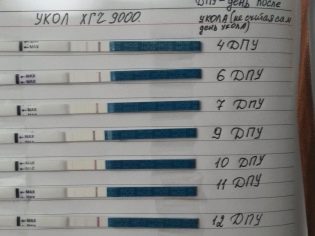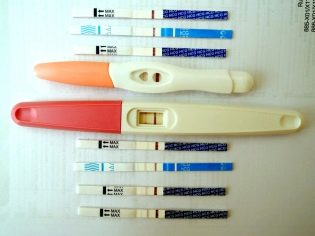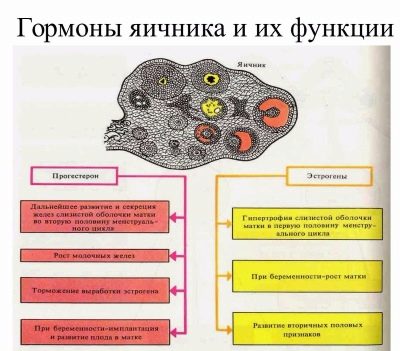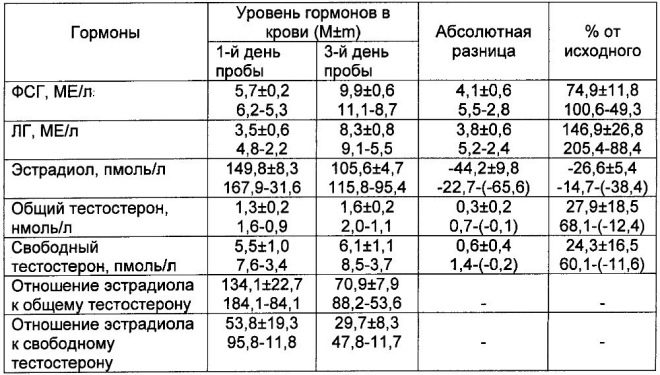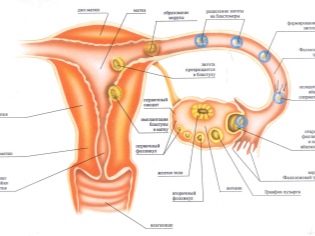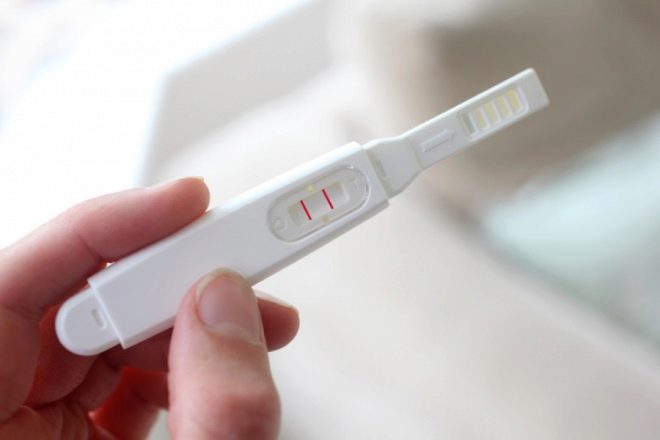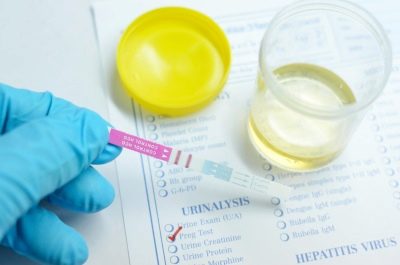HCG level by day from conception
All women planning pregnancy know how exciting there are two weeks after ovulation. Especially hard for them to experience the ladies who have long been planning to become pregnant and for some reason their attempts have not yet been crowned with success. Literally every day, they look for the earliest symptoms and signs of a possible long-awaited pregnancy, and almost a day after ovulation, they begin to buy pharmacy tests to get at least a ghostly hope for a second strip. We will discuss in this article about when the tests should be "streaked".
How does the second bar appear?
All tests for determining pregnancy, regardless of the manufacturer and cost, work the same way. The special reagent applied to the strip is stained only when a sufficient amount of a hormone is found in the woman’s urine, which is a faithful companion of the child’s human chorionic gonadotropin, which in various medical documents is abbreviated as FSHA, GPHA, LHA, TSHA, HCG or HCG.
This substance is often present in the analyzes of non-pregnant women, and even men, but in very small quantities. If the cherished event took place and the child is conceived, HCG begins to be produced more actively. It is produced by the cells of the chorion. Gonadotropin is necessary for the female body in order for the pregnancy to develop.
Under its influence, the corpus luteum, formed after ovulation, does not disappear, as it happens in the absence of pregnancy before menstruation, but persists for the first few months. It assumes the function of the main endocrine organ for the developing embryo.
Under the influence of chorionic gonadotropic hormone the woman’s immunity is somewhat weakened, which increases the chances of the embryo to survive. Otherwise, the strong and well-trained immunity of the mother would simply reject the baby, because it is half alien, since it contains the father’s genetic material.
The production of hCG in the body of a woman gives the command "to start" for the active production of progesterone, without which the preservation and carrying of the child would be impossible, as well as the female hormone estrogen, which is also extremely important during pregnancy.
Hormone level increasing at a rapid pace starting from the moment of implantation. Fertilized egg within a few hours after meeting with the sperm begins its way into the uterine cavity. She has to go through the fallopian tube, sink into the uterine space and gain a foothold in the wall of the main reproductive female organ.
This moment is called implantation. Sometimes a woman herself can guess about him - by insignificant pulling sensations in the lower abdomen, by a drop of smearing on the daily lining. Implantation is usually performed. 6-10 days after fertilization. Most often - on the eighth day.
From this point on, the chorion starts the production of gonadotopin, and the amount of the hormone gradually increases, increasing almost 2 times every 48 hours. This does not mean that the substance can be immediately found in the blood or urine of a woman.
It should take some time for the amount of HCG to exceed the sensitivity thresholds of tests from the pharmacy and laboratory reagents.
How does hormone level increase?
In women before pregnancy, the level of the hormone in the body does not exceed values in the range from 0 to 5 mU / ml. And in the urine the substance is not detected at all. If conception took place, then for the first time the hormone level will exceed the “non-pregnant” threshold only on the second or third day after implantation. I must say that all women produce hormone with different intensity, and therefore You should not demand from laboratory technicians mathematical accuracy.
By the way, these morally difficult days of mothers dreaming of motherhood are called the abbreviation DPO, which means "the day after ovulation." Ovulation, of course, is also not fixed for everyone, but in the overwhelming majority of cases, it falls on the 14–15 day of the cycle - the very middle of it, with a menstrual cycle of 28 days. Thus, 2 DPO is two days after ovulation or the 17th day of the cycle, and 5 DPO is 20 days from the start of the menstrual cycle and only the fifth day after the expected ovulation.
If the fate that the second phase of the female cycle lasts 14 days, The first day of delay is 14 DPO or 29 day of the cycle. Many women, in anticipation of good news, start testing too early and are very worried about the lack of the coveted second strip. After what number of days after conception it is already possible to safely make a test for hCG, it becomes clear if you know how the quantitative indicator of the hormone substance in the blood changes.
Table of averaged quantitative values of HCG in the blood at the onset of pregnancy:
Time elapsed from ovulation | Mean concentration of HCG | Lowest HCG value | Highest hcg value |
7 DPO | 4 | 2 | 10 |
8 DPO | 7 | 3 | 18 |
9 DPO | 11 | 5 | 21 |
10 DPO | 18 | 8 | 26 |
11 DPO | 28 | 11 | 45 |
12 DPO | 45 | 17 | 65 |
13 DPO | 72 | 22 | 105 |
14 DPO | 105 | 29 | 170 |
15 DPO (start delay) | 160 | 39 | 270 |
16 DPO | 260 | 68 | 400 |
17 DPO | 410 | 120 | 580 |
18 DPO | 650 | 220 | 840 |
19 DPO | 980 | 370 | 1300 |
20 DPO | 1380 | 520 | 2000 |
21 DPO | 1960 | 750 | 3100 |
22 DPO | 2680 | 1050 | 4900 |
23 DPO | 3550 | 1400 | 6200 |
24 DPO | 4650 | 1830 | 7800 |
25 DPO | 6150 | 2400 | 9800 |
26 DPO | 8160 | 4200 | 15600 |
27 DPO | 10200 | 5400 | 19500 |
28 DPO (two weeks delay) | 11300 | 7100 | 27300 |
Test sensitivity
The gonadotrope produced from the moment of attachment of the ovum first enters the blood, and only then some of it is excreted in the urine. Therefore, at the initial stage, even before the onset of the delay, only the biochemical blood test can show the “piquant situation”.
Tests that are available in any pharmacy or store, too, differ in their sensitivity, in their ability to "catch" the traces of the hormone in the selected fluid. The minimum is 30 units, the maximum is 10. Most often on the shelves of pharmacies there are test strips with an average sensitivity of 20-25 mU / ml. They are able to respond to the increase in the chorionic gonadotrope with a control strip only at 14-15 days after conception. That is why they are recommended to be held in the first days of the actual delays, so that the results are not in doubt.
If ovulation occurred on time and implantation did not linger, then the analysis will give informative first results at least 10-11 days after fertilization.
Of course, it happens that the test begins to show a weak second striped and earlier, but this becomes possible only in women with the production of hCG at the level of the maximum or above the average norm. The conclusion from the above is one - if o pregnancy need to know as soon as possible, you should go to the nearest clinic to donate blood for the determination of hCG.
If “time endures,” then a woman should be patient, not nervous and wait for the delay to conduct a simple and understandable home test that most likely will be able to answer the main question. 2 weeks from conception.
Weekly growth
Chorionic gonadotropin does not always grow at a pace like in the first days of pregnancy. At first, it doubles every 48 hours, as soon as the concentration of a substance in the blood exceeds 1200 mU / ml, the growth of the hormone will slow down somewhat - it will begin to increase every 72 hours. When the concentration reaches 6000 mU / ml, the growth will be even slower - quantitative indicator will change every 96 hours.
The number of pregnancy hormone reaches its maximum by 10-11 weeks of pregnancy, after which it begins to decline at a quiet pace. When pregnancy is multiple, and the expectant mother bears two or three children, the level of the hormone in her blood and urine will be two or three times higher than normal (the chorion of each of the babies produces its own “hormonal accompaniment”, hence the inflated figures).
Possible problems
In trying to deal with the values of hCG, many women face a lot of questions and problems, the answers to which are not so easy to find. Among the multitude of information on the Internet, there are few specific indications of the causes of certain ambiguities associated with the “hormone of pregnancy”. We tried to put together and answer the most common questions related to the definition of the “interesting situation” at the initial stage.
How to make an analysis?
Before visiting the treatment room or laboratory for 12 hours, it is advisable to refuse to take fatty foods. The study is conducted by biochemical method, so the abundance of fat can affect its performance. Blood from a vein is passed on an empty stomach. The result can be obtained after a few hours or a day, it all depends on the work of a particular laboratory.
Before carrying out a home test, prepare a clean, dry urine collection container. Dietary restrictions are required. It is best to do a morning urine test, because it is considered the most concentrated. However, many pregnant women refer to the fact that their brighter and clearer second stripes appeared on the evening urine. It all depends not so much on the time of day as on the time elapsed between urination. Before testing, make sure that at least 5 hours have passed since the last visit to the toilet.
Before testing, make sure that at least 5 hours have passed since the last visit to the toilet.
The result does not match any existing table.
This really happens often, and this is not a reason to worry. The fact is that different laboratories use different reagents and auxiliary technologies for biochemical blood tests. Hence, such a difference in the final indicators. When taking a ready-made analysis, do not forget to ask to show the norms of hCG for this particular laboratory, so that you have something to compare your results with. And the best way to get an on-site appointment with an obstetrician-gynecologistwho can correctly decipher data from the laboratory.
Level lowered
Below the norm, the level of the substance produced by the chorion can be in women who have had late ovulation. The lady herself believes that after ovulation 14 days have passed and waiting for at least 105 mU / ml in the conclusion of the laboratory assistant. But the result is 64 or 80. A woman falls into a stupor and begins to look for the causes of "problems". In fact, she doesn’t even realize that her ovulation was “late” for a couple of days, which resulted in the later implantation of blastocytes into the uterine wall.
Reduced may be the value of chorionic hormone in women with the threat of spontaneous abortion. On the one hand, the threat reduces the level of production of such an important hormone, and on the other - the threat is intensified against the background of hCG deficiency. Doctors will help in this situation, because they can offer a woman hormone support therapy, which will restore the balance of necessary substances and give the baby a chance.
Level above normal
The level of hormone substance produced by the chorion may be overestimated when early ovulation has occurred. This is also quite realistic, and then the embryonic period will in fact be different from what the woman herself assumes for several days. Thus, the blood test will show better results than expected, and this will be quite justified, because the implantation occurred earlier.
Increased hormones may be if a woman becomes pregnant with twins or triplets.. But only ultrasound diagnostics will be able to answer this question, and not earlier than at 6-7 weeks of gestation, when it will be possible to examine the number of embryos on the scanner monitor. In the meantime, a woman will need to repeat the blood test several times in order to get a picture in dynamics - the increase in the concentration of the hormone in multiple pregnancies will be even, albeit elevated according to all standards.
The test is negative and the blood test is positive.
In this case, most likely, there is a pregnancy. Just her term is still so small that the concentration of the hormone in the urine (and it is half the concentration in the blood) reagents strips are not captured (less than 15-20 mU / ml). After a few days, repeat the simple urine test at home.
A home test is positive and a blood test is negative.
Most likely, there is no pregnancy. The test may be trivially defective, and this phenomenon is common. It may be held with an error. Sometimes, for a positive result, a woman who really wants a child takes the so-called “ghost” of a strip - a weak and hardly distinguishable second strip of grayish color. In most cases, this optical phenomenon is the designation of the place where the reagent is applied, which becomes somewhat gray after the strip dries. A ghost cannot talk about pregnancy.
If it is confirmed under laboratory conditions that the level of the hormone in the blood does not indicate the occurrence of an “interesting position”, then it is worthwhile to trust a more accurate method - the laboratory one.
The analysis was positive and then became negative.
For women who are not perplexed by measuring hormone levels in the second phase of their cycle, sometimes there is a delay of several days. After that, monthly come, though more abundant than usual. Nobody pays attention to it. A woman who will track her condition before the delay with all her strength, including testing before her, in this situation can get a very strange result - positive, indicating several days of pregnancy, but after a week tests can give negative results.
If the blood at 11 DPO showed the presence of pregnancy, and the monthly, albeit belatedly, still came, most likely, there was a rejection of the ovum from the uterine wall. This can happen for a variety of reasons. Most often at the root of the problem are genetic defects and anomalies, irreparable mistakes of nature during fertilization. Such an embryo is not able to grow at a normal pace and is rejected.
Why send for analysis?
Sometimes a referral to a blood test to determine the level of hCG is given by a doctor. He does it not always and not for everyone. This usually happens at a reception where a woman comes in with complaints of a monthly delay. It is almost impossible to establish the fact of pregnancy after 10 days of delay.but because the doctor can send the lady home and ask to come later or give direction to the laboratory.
He will do this if you need to know for sure right now whether a pregnancy has occurred.This may be necessary if an in vitro fertilization procedure (IVF) was carried out, if a woman had miscarriages and miscarriages earlier in the initial terms of gestation, if she recently had an ectopic pregnancy or had an abortion.
The level of the hormone gonadotropin allows not only to judge the fact of pregnancy and presumably determine its duration, but also to track how the embryo grows and develops in the period before it can be seen on ultrasound.
If hCG is growing at a good pace, and tests made with a difference of 5-6 days confirm this, then there is nothing to worry about. If the growth of the hormone has slowed or stopped, if its decline has begun, the doctor may suspect a missed or ectopic pregnancy, which requires early surgical intervention to save a woman’s life.
In the next video, experts will tell you about what HCG or human chorionic gonadotropin is.


